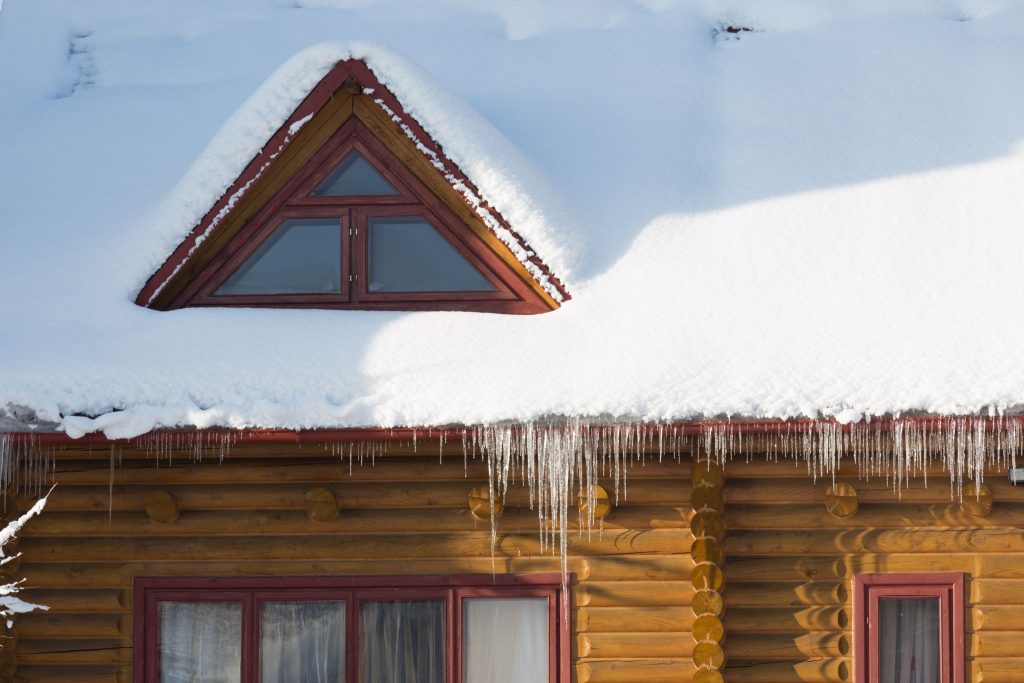
Winter is officially here, even in the southeast. We may have only gotten a few flurries so far, but that should be warning enough that more serious weather could soon be on its way. It’s not too late to perform some basic roof maintenance before you’re in the position of requiring costly repairs. Whether at your home or business, the roof is any building’s first line of defense against heat loss, water damage, infestation from vermin looking for a cozy winter nest, or mold.
The first step is to attend to your gutters. Now that leaves are done falling, it’s time to scoop out whatever accumulated in your gutters and give them a good rinse. Cap your downspouts with wire mesh, if necessary, to prevent clogs, and make sure your gutters are still level and well-mounted so the water flows the right direction and doesn’t pool or accumulate. Also trim back any trees or vegetation that might be scraping the roof, dropping branches or giving pests a path up, or pushing the gutters out of alignment.
While you or your maintenance person is up there, check for any missing shingles, warped substructure, or signs of damage. Now is the chance to repair and replace anything that got damaged during summer storms, early freezes, or just from age. Look out for “alligatoring” of roof surfaces– if it looks like the skin on an alligator’s back, it might be time to get new materials laid down. Same for weathering or discoloration that suggests you need a new coat of stain or paint, or just fresh shingling, tar, or asphalt. You’ll also want to make sure all flashing is in place and well-secured against chimneys, fascia, and siding so there are no gaps that turn into greater problems.
It’s safest to have a qualified roofing expert inspect the actual surface of your roof. But you can check your attic yourself for drafts, mold, water damage, and other flaws. If you had a squirrel, raccoon, or opossum take up residence earlier this year, it’s not a bad idea to tear out insulation that may have been matted down or might have animal droppings in it that could spread disease. If your home is showing signs of heat loss, replacing the insulation could be a quick, cost-effective way to keep your heating bill down.
While you’re upstairs, look for discoloured ceiling tiles or walls, musty smelling rooms or chimney spaces, cracks in plaster, or bubbling or stained drywall. All of these can be signs of moisture damage that likely comes from a leak in the roof. But keep in mind that in older homes, sometimes plaster cracking can be caused by other factors, like settling in the foundation or even a lowering of the water table as the result of drought.
It’s unlikely you’ll have to worry about monster icicles or snow load down here in Tennessee, but just in case we get another Blizzard of ‘92, it can’t hurt to be prepared. Almost any homeowner can keep an eye out for signs of roof distress, especially if you’re up on a ladder anyways to hang Christmas lights. If you do see a problem though, that’s what the experts are for. For one, we know our way around a roof with full safety protocol and loads of experience. For another, we have the tools and materials necessary to keep your roof in top working order, which keeps your household warm and dry all winter long. This holiday season, give your family the gift of a sturdy, up-to-date roof for Santa to land on. At Tennessee Roofing and construction, we’ll get you reindeer ready!


